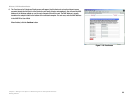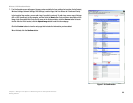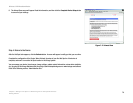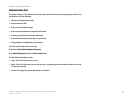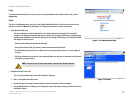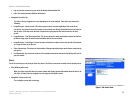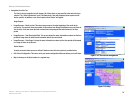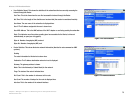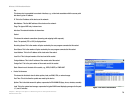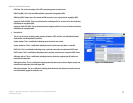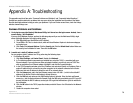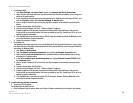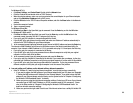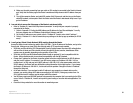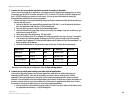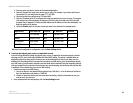
76
Chapter 7: Boingo™ Hot Spot in a Box® Program for Hot Spot Businesses
Administration Site
Wireless-G VPN Broadband Router
Arp
This shows who is associated to a network interface; e.g., a client who associates with the access point
but doesn’t get an IP address.
IP. This is the IP address of the device on the network.
Mac Address. This the MAC address of the device on the network.
Flags. The type of ARP entry is shown here.
Interface. The network interface is shown here.
Socket
This shows the network connections (incoming and outgoing traffic requests).
Proto. The protocol (TCP or UDP) is displayed here.
Receiving Queue. This is the number of bytes received by the user program connected to this socket.
Send Queue. This is the number of bytes received by the user program connected to this socket.
Local Address. This is the IP address of the local end of the socket.
Local Port. This is the port number of the local end of the socket.
Foreign Address. This is the IP address of the remote end of the socket.
Foreign Port. This is the port number of the remote end of the socket.
State. Shown here is the state of the socket, e.g., OPEN, CLOSED, or TIME WAIT.
• Device Performance
This shows the historical view of device uptime, load, and RAM, CPU, or network usage.
Post Time. This is the time the update was made by the device.
Uptime. This is the total amount of uptime, represented in DD:HH:MM:SS (days, hours, minutes, seconds).
Load. This is the system load average, represented in typical UNIX format displaying averages for the past
1, 5, and 15 minutes.
Figure 7-25: Device Performance



